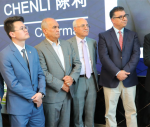You are here
Why Bill Gates gets it wrong
May 25,2014 - Last updated at May 25,2014
In his review of Nina Munk’s error-filled and out-of-date book, Bill Gates oddly abandons the rigorous approach to measurement and evaluation that defines his foundation’s invaluable work.
He simply accepts Munk’s assertion that the Millennium Villages Project — an ongoing development project across more than 20 African countries — has failed. In fact, it is flourishing.
This credulousness is puzzling. Munk’s book covers only a sliver of the first half of a 10-year project, and only two of 12 villages.
And she never “lived for extended periods in the Millennium Villages”.
Munk spent an average of around six days per year — around 36 days over six years — actually visiting the villages, and usually at a stretch of 2-3 days.
Moreover, she came to the story as a reporter for the magazine Vanity Fair, with no training or experience in public health, agronomy, economics or African development.
Worse, Munk’s observations frequently seem to have been, at the very least, greatly exaggerated for narrative effect.
Does Bill Gates really believe that I advocated specific crops without worrying about whether there was a market for them, or that I failed to consider national taxation in my ongoing advice to government leaders?
Moreover, the agricultural strategies and choices in the MVP have been led by African agronomists, some of the very best in Africa — often working hand in hand with Bill’s own agricultural staff in the Alliance for a Green Revolution in Africa (AGRA).
Bill will be happy to know that the MVP will be properly and professionally evaluated next year — on time at its conclusion (and at the end of the Millennium Development Goals in 2015).
The assessment will be based on the very considerable data that have been collected over the past decade, and on extensive new survey data that will be collected in 2015.
Moreover, the evaluation will include comparisons with areas surrounding the Millennium Villages.
In fact, I hope that the Bill and Melinda Gates Foundation will help to carry out the detailed, independently supervised survey work needed for a full evaluation of this complex project.
Let me provide some more good news, based on the detailed data on community health delivery, morbidity (disease), and mortality that the MVP collects each month.
Mortality rates are down sharply in the Millennium Villages.
In fact, the current evidence, to be examined in greater detail next year, suggests that the bold goal of reducing under-five mortality rates to below 30 deaths per 1,000 births has been achieved or is within reach by 2015, and at a remarkably low cost to the health system.
Recently, one of the Gates Foundation’s senior staff members visited the Millennium Village site in northern Nigeria.
Afterwards, he confirmed to me personally that he and his team were deeply impressed by what they saw of the Millennium Village health system in operation.
So let me take this opportunity to reiterate a challenge that I have posed to Bill.
He can pick any district in rural Africa, and our team will work with the local communities using the Millennium Village health approach to reduce the under-five mortality rate to below 30/1,000 — a rate characteristic of many middle-income countries — at an annual health-sector cost of just $60 per person.
And we will do it in five years or less.
That success, I believe, would help Bill and others to recognise the remarkable value of investing in low-cost rural health systems that follow the design principles of the Millennium Village Project.
Finally, given concerns, shared by Bill, about the MVP’s sustainability and scalability, it is no small matter that host governments are strong advocates of the approach.
These government leaders have seen the Millennium Villages day in and day out over almost a decade.
They are putting their own money and policies behind expanded implementation of the MVP’s guiding concepts.
For example, Nigeria has used the MVP concepts for national-scale delivery of health and education services in all 774 of the country’s local government areas.
Governments across the region have taken over $100 million in financing from the Islamic Development Bank to scale up the MVP concepts themselves.
Around a dozen countries are now starting or have approached the Millennium Village Project to help them start their own Millennium Villages.
And the Pan African Youth Leadership Network, Africa’s own young people, recently visited the Millennium Village in Senegal, and requested the support of the MVP to expand the Millennium Village Project’s techniques and strategies in their home countries and regions.
This spread of the Millennium Village approach throughout Africa shows that African political and community leaders consider the MVP’s methods, strategies and systems to be highly useful in combating poverty in rural Africa. Nina Munk’s book is out of date and misses the mark.
I invite Bill Gates to visit one or more Millennium Village sites on an upcoming trip to Africa to see first hand why the approach is of such practical interest across the continent.
The writer is professor of sustainable development, professor of health policy and management, and director of the Earth Institute at Columbia University. He is also special adviser to the United Nations Secretary-General on the Millennium Development Goals. ©Project Syndicate, 2014. www.project-syndicate.org











